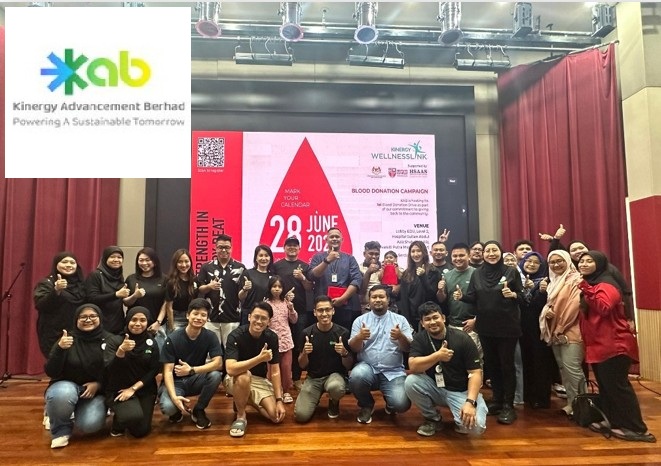A recent report that global fashion chain Forever 21 is shutting hundreds of its stores after filing for bankruptcy prompts one to ponder if is this another Toys’R’Us story in the making.
Could it be another case of a business being overtaken by the technology-driven way of doing business?
We see how technology is impacting our daily lives and routines, and the real estate sector is no exception.
In October, Tan Sri Abdul Rahim Abdul Rahman, executive chairman of property consultancy firm Rahim & Co, shared his thoughts on how technology impacts the real estate industry.
I would like to resonate his thoughts on how technology will re-tune the real estate industry in the years to come.
The advancement of technology over the last couple of decades has drawn a wide range of responses and reactions at almost all levels of human interactions.
Such advancement had given birth to the likes of Uber and Grab, which have revolutionised the taxi service by allowing commuters to have better transportation access via ride-sharing services with a more reliable travelling schedule.
Human labour has also been greatly affected by technologies that are fast replacing manual labour through automation and artificial intelligence in various tasks, not only in manufacturing but also in the services sector.
The need for physical service counters seems to be dwindling alongside the rise of mobile phone apps and websites.
Some view technology as a great evil that slowly diminishes humanity, while others view it as a way to bring the world closer together and help solve some of our greatest challenges.
PropTech emerges
The phenomenon of technology entering and reforming the real estate sector has driven new industries that are commonly referred to as PropTech, short for Property Tech.
Similar to its cousin, FinTech, it is a new concept based on the idea of combining technology-based or technology-driven methods with the existing machineries within the industry and ultimately transforming the systems at a fundamental and systemic level.
And through the years, even before the 2000s, PropTech was seen to happen in stages.
On whether technology is villain or saviour to the real estate industry, we need to look at all the three phases of PropTech and see what can be interpreted from them.
Is it a villain hiding behind the mask of futuristic glamour? Or is it a misunderstood saviour fighting stubborn traditional norm?
In the 1990s to early 2000s, after about a decade or so from when mobile telephones and satellite phones came about, ICT and the internet came in and soon become mainstream.
Companies were lured to mainly focus on web presence mostly for fear of being left behind.
Many take it as a low risk endeavour because it does have its merits and promotes increased market presence, ease of access to information and is seen as a new medium of advertising.
As many developers set up websites, information dissipation began and it seemed easier to search for information but ICT technology was still at an early stage.
We were using dial-up internet to link up with the few internet service providers available at the time. We didn’t have smart phones or mobile internet.
Despite having to physically hook up to a PC with a dial-up modem, buyers and prospects were shifting towards online sources of information than having to make the trip to a developer’s office or sales gallery or even to a real estate agency office.
Then in the early 2000s, fanned by the need for faster and easier ways to make property purchases, technological advancement democratised the mobile internet which made it much easier to do multiple searches for a homebuyer’s dream home.
Buyers could choose, filter and customise their searches for that choice property. They didn’t need to spend months inspecting one house after another on offer in the market.
The ability to shop with the click of a mouse gave birth to many online marketplace where listings were made online.
Linking buyers and sellers became so much easier, through property portals by property technology companies.
Revenue was mainly generated from the listing fees on the pre-sales front as lead generators for developers and estate agents, but most post-lead real estate transactions were still manual.
Then came phase 2.0 with the introduction of mobile broadband internet and 4G technology which revamped virtual and internet-based communication.
Coupled with Industrial Revolution 4.0 (IR 4.0) , with even faster data speed and expanding data-carrying capacity, PropTech 2.0 emerged with greater information sourcing and transfer.
Combined with the smart phone explosion and cloud technology, it became a revolutionary business-to-consumer solution to help property developers digitally manage sales quickly and effectively.
Value-added services
At this juncture we saw the expansion of property portals into value-added services, while those that did not embrace such changes dropped out.
You may say that these companies are akin to the e-commerce trends that are sweeping the retail industry today.
When e-commerce trends came into play, a more serious disruption was inflicted which resulted in a number of household brands becoming irrelevant and they ultimately closed down.
These included Toys’R’Us, reminding us of once-corporate giants Nokia and Kodak.
Recently, Forever 21. too, announced its decision to file for bankruptcy and is expected to close between 200 and 350 stores worldwide.
Its vain struggle to survive was due to newer online retailers taking over the fast fashion industry.
Artificial intelligence and machine learning technology began to replace professionals as they made it seemingly easier and faster as well as a good alternative to traditional means and products.
With customers interacting more and more online, transaction records and consumption behaviours were trackable and readily available, creating an overall rich pool of data known as Big Data.
Data harnessing was utilised to better understand market behaviour and allow stakeholders to make more informed decisions.
Such data became invaluable for consumers and investors, and even evolved as a commercial commodity by itself.
It was also in this phase that the Sharing Economy became mainstream as a new way of doing business.
In the residential sector, we see the likes of AirBnB, HomeAway & SpeedHome that provide a more direct and online relationship between landlord and tenant; while in the office sector, we see the rise of co-working brands such as WeWork (notwithstanding their recent situation), Regus and CommonGround.
In the construction industry, new building methods were introduced such as the Industrialised Building System or IBS and 3D printing.
Comparatively, the rate of adoption of these technologies by industry players are slow due to the high capital investments needed and the insufficient push factor for developers and construction companies.
Moving forward, this could lead towards reducing construction costs that are driving the current house price woes.
And now…
And now we come to the latest phase: PropTech 3.0.
Moving in an even more complex and sophisticated manner than its predecessor, it is powered by even faster network speed with 5G and the mindboggling technology of blockchain.
While the concept of blockchain has yet to be fully comprehended by many, Scandinavian countries, the US, Europe and others have begun to adopt and experiment with blockchain as a secure system of business transactions, including property transactions and property registry.
After all that has been said, should technology, as a new characteristic of the traditional real estate industry, be perceived as the villain or saviour of the day?
What can be said now is that it is both; meaning that for disruptive technology to save the day, it must first be the villain that shakes the old, long-standing foundations.
Why stick to the old when the new is better in many ways.
It does not mean all traditions must be done away with and replaced completely but that strategic improvements and upgrading can actually allow high-valued traditions to remain relevant to the current market.
For those who stubbornly refuse to embrace change, they face the risk of becoming irrelevant and possibly outright obsolete, which inevitably leads to their demise.
As the internet has become the essence of our world today, one may say: Go online or go home.
Sulaiman Akhmady Mohd Saheh is director of research at Rahim & Co International Sdn Bhd, one of the largest real estate consultancy firms in Malaysia









